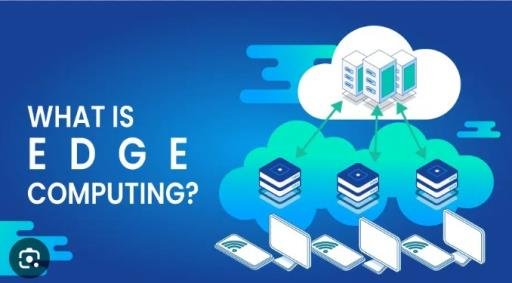What is edge computing?

Edge computing is a distributed computing paradigm that brings computation and data storage closer to the sources of data, like smart devices, sensors, and machines. Instead of sending all data to a central cloud server for processing, edge computing analyzes and processes data locally, closer to where it’s generated. This reduces latency, increases responsiveness, and improves efficiency.
How does edge computing work?
Edge computing involves deploying computing resources at the “edge” of the network, closer to the data sources. This can include:
Edge devices: smart devices with embedded processing power, like sensors, drones, and wearables.
Edge servers: small, localized servers placed closer to data sources, like cell towers or retail stores.
Microdata centers: compact, portable data centers deployed near the edge.
These resources process data locally, often using pre-trained models or algorithms. They can also send aggregated or filtered data to centralized cloud servers for further analysis or storage.
Key benefits of edge computing:
Reduced latency: Processing data locally minimizes the distance data needs to travel, leading to faster response times and real-time processing.
Enhanced security and privacy: Sensitive data can be processed locally, reducing the risk of breaches and improving data sovereignty.
Efficient bandwidth utilization: Filtering and processing data at the edge reduces the amount of data sent to the cloud, saving bandwidth and network resources.
Improved reliability: Local processing can function even if the internet connection is unstable or unavailable.
Use cases of edge computing:
Internet of Things (IoT): processing sensor data from connected devices for real-time insights, predictive maintenance, and automated actions.
Autonomous vehicles: analyzing sensor data for real-time obstacle detection, route optimization, and autonomous driving functions.
Healthcare: processing medical images and data for faster diagnosis, remote patient monitoring, and personalized treatment plans.
Manufacturing: monitoring production lines for real-time quality control, predictive maintenance, and optimizing processes.
Retail: personalizing customer experiences, optimizing inventory management, and enhancing supply chain efficiency.
Challenges and drawbacks:
Security concerns: Securing large numbers of distributed devices and managing data privacy can be complex.
Data management: Handling large volumes of data generated at the edge requires efficient storage and processing solutions.
Standardization: Lack of standardized protocols and technologies can create compatibility issues between different edge devices and systems.
Resource limitations: Edge devices often have limited processing power and storage compared to centralized servers.
Edge Computing vs. Cloud Computing:
Edge computing complements, not replaces, cloud computing. The cloud offers centralized storage, scalability, and advanced analytics capabilities. Edge focuses on real-time, low-latency processing and localized data analysis.
Benefits of implementing edge computing strategies:
- Faster decision-making and improved responsiveness
- Enhanced operational efficiency and cost savings
- Increased security and data privacy
- Improved user experience and customer satisfaction
Impact of edge computing on data processing and storage:
- Data is increasingly processed and analyzed closer to the source, reducing reliance on centralized cloud storage.
- Edge computing requires efficient data storage solutions for local processing and filtering.
Exploring Edge Computing in Network Infrastructure:
- Edge computing optimizes network performance by reducing data traffic and latency.
- Edge devices and servers can improve connectivity and reduce reliance on centralized infrastructure.
- 5G technologies offer faster speeds and lower latency, enabling advanced edge computing applications.
Practical Applications of Edge Computing:
Edge servers for efficient data processing: processing sensor data from smart grids, traffic management systems, and environmental monitoring systems.
Edgecomputing for IoT devices and autonomous vehicles: Enabling real-time decision-making and autonomous operations.
Computing in healthcare systems: processing medical images for faster diagnosis and remote patient monitoring.



